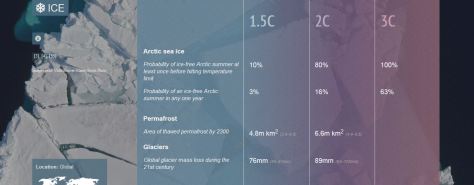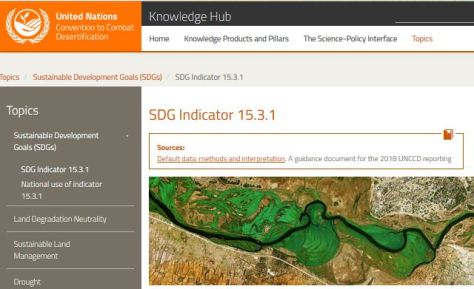Nicolas A. Balcom Raleigh & Amos T. Taylor
(Originally published on the FFRC department blog 19.10.2018)
The Bioeconomy and Justice futures team continues its Open Horizon Scanning process with this second batch of found items. We thank readers who gave us positive feedback on the launch of this endeavor. We feel encouraged to continue this experimental series of blog posts.
The BioEcoJust project is concerned with the ethical challenges humanity will face in the development of the bioeconomy between now and the year 2125. As part of a larger multi-method research process, we are conducting an ongoing horizon scanning process to inform, develop and test our research findings as we go. On any given week, we encounter a dozen or more items relevant to our research topic. These items can be anything, ranging from academic articles to internet memes. Our project’s futures team has established a practice of documenting, sharing, and reflecting upon these horizon scanning items as we find them. From these discussions, we develop sensemaking tools which we then use to notice new items and interpret them in relation to our project.
Usually, organizations and teams do their horizon scanning privately, in many cases seeing it as a source of competitive advantage. We, however, decided to do some of our horizon scanning work openly. Our reasons are:
- To more rapidly share our emerging insights with our research communities including our FFRC colleagues, the rest of the Academy of Finland BioFutures 2025 programme, and other futures studies scholars and practitioners;
- To deepen our interpretations and analysis of the items by communicating about them and listening for feedback;
- To provide an ‘in process’ view of how we are approaching our research topic;
- And, to invite discussion about the items we present and their implications for the future of the bioeconomy.
Our goal is to share 3–5 horizon scanning items in somewhat frequent and easy-to-read blog posts. To analyse the presented items, we apply the sensemaking tools we’ve developed so far: the human-technology-nature triangle, three socio-technical domains, and our five BioWorlds (see our launch announcement for detail). To be somewhat systematic in our analysis, we will generally include the following elements about each presented item:
- A short headline conveying the item’s essential meaning;
- A reference and link for the item;
- A brief description;
- How it relates to other items we’ve encountered;
- Meanings of the item in relation to our existing sense-making tools (e.g. BioWorlds, Human-Technology-Nature Triangle, and Three SocioTech Domains);
- And, perhaps most important — the potential futures we see in the item.
This batch of items all share a cross-cutting theme of bioeconomy and it’s potential to address climate change. They include an interactive article conveying the ranges of impacts of global warming, the role of climate change interventions by the wealthy philanthropists, the new global land-use degradation indicator announced by UNCCD, and the launch of a scientific debate regarding how suitable wood-based sources for energy are for reducing CO2 emissions.
Horizon Scanning Items
1. The many ways 1.5C is less than 2.0C
Carbon Brief (2018) Impacts and Uncertainty of 1.5C & 2.0C. Climate Change. (Accessed 10 October 2018).
This item caught our attention in relation to the widely covered IPCC Special Report 15 released on 8 October. It is an interactive article by Carbon Brief about the ‘impacts of climate change at 1.5C, 2C and beyond. Based on 70 peer-reviewed recent climate studies, it briefly sketches out temperature differences and their impacts for the future in ten categories: Oceans, Ice, Temperature, Rainfall, Drought, Storms and flooding, Crops, Nature, Economy, and Health. Rather than being a simple list, this quantified analysis is presented as ranges of possible impacts and uncertainties while conveying the complicated interrelations among the impacts. For example, depending on if we are talking about 1.5 or 2.0C global average temperature increase, the sea level will rise between 59 and 61 cm by years 2100 and 2300, and warm spell durations will range between averages of 17 to 35 days of continuously warm (hot) weather per year.
In 2015, a presentation by CICERO suggested that the IPCC scenarios of 2.0C increase were rather optimistic with one crucial factor hanging in the balance, the need for negative emissions through carbon capture. The technology and mechanisms for negative emissions are yet to be demonstrated and their viability at scale remains highly uncertain. Futurist’s ears perk up whenever uncertainty is discussed, as these are exactly the areas of the future requiring deeper exploration and bolder strategic action. This week’s IPCC report underlines the need to explore uncertainty to find solutions, to acknowledge the wide complexity of impacts, and the need for concerted and far-reaching action as soon as possible.
In this sense, this item signals a coming maturation in discussions about climate change in which frameworks like this enable discussion about the uncertainty of warmer futures by specifying the variety of combinations of possible impacts. This horizon scanning item may also signal a wider strengthening of our Bio-Equality world’s influence on how people conceive of and act toward an ideal relationships among Humans, Technology, and Nature. At the very least, it is another call for greater awareness of how bold transformative actions are needed today in order to improve the options for people living 100 to 200 years from now.
2. The downsides of “billionaire saviors”
Florida, Richard (2018) Real Change Won’t Come from Billionaire Philanthropists. 27 September 2018, City Lab. (Accessed 17.10.2018.)
This item is an interview with author Anand Giridharadas who summarizes many key arguments he makes in his new book Winners Take All. The core of his argument is that the world’s wealthiest people are co-opting the concept of social change in their initiatives to do good. As wealthy people implement their own tools for social change, like social impact investing, change-driven invite-only events such as DAVOS, or personal ‘save-the-world’ pet projects, they simultaneously set the rules for how change should be enacted, closing out other options, and thereby reinforcing their economic power. We don’t necessarily agree or disagree with Giridharadas (we would need to read his book more closely), but we take his observation of this phenomena of what we’ll call ‘billionaire saviors’ as a starting point for exploring some fascinating future potentials.
His criticism of the present class-based influences on the future reminds us of arguments made by Moore (2016). Moore rejects the ‘it’s all of humanity’s fault’ logic of many Anthropocene scholars and instead places the blame for environmental devastation and the looming climate crisis on historical Europe-led colonialism. These past actions dehumanized many non-European people and severely devalued nature in pursuit of capital accumulation. Moore’s point emphasizes the significance of how a small group of powerful actors fundamentally perceive nature’s value. In this light, how today’s billionaire saviors regard nature is quite important to how far we can go in righting the past wrongs of colonialism over the next 107 years.
Both Giridharadas and Moore are part of a growing list of authors who either call for or predict the need for a new economic system in order to avoid the worst possible outcomes of the global warming crisis. These criticisms link to a sensemaking tool our Bioecojust team is developing regarding the future evolution of the global economy. In our opinion, the often taken-for-granted assumption that the current economic order will continue indefinitely is highly questionable. The overall economic order has changed so profoundly and so many times over the last 100 years that it is highly unlikely it won’t continue to change over the next 100 years. Yet, how can we imagine beyond what we already know? What new forms of ‘valuation of value’ can we expect in the future? (e.g. see 99 These on the Revaluation of Value ) How frequently can we expect the overall economic order change over the next 107 years, due to what factors, and what forms will it take?
This horizon scanning item helps shed some light on these questions by naming a powerful mechanism shaping the present–that wealthy people apply their economic influence to produce change while perpetuating economic structures and systems that continue the destructive status quo. This phenomena of Billionaire Saviors intervening to make change cuts across all five of our BioWorlds as many actors in those worlds already are, or will soon be, mobilized by these types of funders. This phenomena is also present in the three socio-technological domains we are investigating–forests, soil, and algae–as private wealthy individuals play key roles in the development of all three domains. Billionaire Savior initiatives take the form of betting on single solutions to complex and nuanced problems. The motivations of these billionaire saviors are deeply linked with the human, nature, technology triangle as their expectations for how these relationships ‘should be’ profoundly structures the designs of their interventions. Even if these Billionaire Saviors can exert extraordinary influence on societal developments more rapidly than other types of actors, what happens when they are wrong? What other forms of change are overlooked? On a 107-year timeline, will their presence and influence increase or decrease? We note that the actions of Billionaire Saviors must be carefully watched in regards to the development of the Bioeconomy. We also note that doing something is better than doing nothing, even while we wonder what other forms of action could have a greater and longer lasting impact.
3. Coming Soon: A global Land Degradation Indicator
UNCCD (2018) SDG Indicator 15.3.1. UN Sustainable Development Goal 15.3 Knowledge Hub. (Accessed 10 October 2018.)
UN Sustainable Development Goal 15.3 aims to ‘combat desertification, restore degraded land and soil–including land affected by desertification, drought and floods– and strive to achieve a land degradation-neutral world’ by 2030. The custodian agency of SDG Goal 15.3 is UNCCD and they are maintaining a knowledge hub to track its progress. An infographic on the hub’s homepage shows how SDG 15.3 is linked to several other SDGs, including safe water, ending extreme poverty, ending hunger, and conserving ecosystems. This horizon scanning item includes both the Knowledge Hub and the Land Degradation Indicator 15.3.1 announced on it. This new indicator is good news for our project because Land Degradation due to human pressure and climate change is one of nine key influences on the year 2125 we’ve identified. Land degradation is a cross-cutting theme in our BioWorlds as well, especially BioUtility and BioRecovery which are at odds with each other in regards to land use. However, to date, there are many differing scientific approaches to assessing of how much of Earth’s land is degraded. So far, to understand the current status of this factor, we have been relying on the IPBES (2018) land degradation forecasts for 2050 and Gibbs and Salman’s (2015) harmonization of four land degradation measurement approaches. In the future, we look forward to having a standardized way to track land degradation. UNCCD plans to first publish Indicator 15.3.1 in February 2019 based on data gathered in 2018. After this, the indicator will be updated every four years. For key players in the bioeconomy (policymakers, business leaders, researchers, startups, etc.) this indicator will serve as a valuable metric by which to determine positive or negative impacts of their actions. For example, the key actors in our BioRecovery world, which features innovators deploying advanced technologies such as space-based monitoring, artificial intelligence, blockchain, and drones to rapidly restore critical ecosystems, could use this indicator to target their interventions, measure their successes, and communicate scientifically about their contributions.
4. Are biofuels renewable?
Searchinger, Timothy D., Tim Beringer, Bjart Holtsmark, Daniel M. Kammen, Eric F. Lambin, Wolfgang Lucht, Peter Raven, and Jean-Pascal van Ypersele (2018) Europe’s renewable energy directive poised to harm global forests. Nature Communications, 2018, 9 (1). (Summarized on Science Daily as “Europe’s renewable energy directive poised to harm global forests, experts argue”)
“Europe’s decision to promote the use of wood as a ‘renewable fuel’ will likely greatly increase Europe’s greenhouse gas emissions” states the Science Daily article about an academic commentary that summarizes a warning by 800 scientists about counting wood-based biofuels as a renewable energy source. With the pressures of climate change comes the urgent need to find alternative greener energy and fuel solutions that can replace global dependency on fossil fuels. The EU’s renewable energy directive has opted to identify wood and thus the forest sector as an attractive candidate. However wood as an inherent natural green solution is problematic when it comes to being utilised directly as a source of fuel because, as it is suggested in this item, it can produce more carbon emissions than fossil fuels, depending on the calculation methods and use of carbon offsets. Rather than focusing wood use on other areas like construction or new materials derived from cellulose, wood for fuel would push EU energy emissions over the limit, the scientists argue. This strategy also gives the green light globally for forests as a source of fuel, potentially resulting in dense precious forest areas of Brazil, for example, being cut at a large scale exclusively for biofuel. A potential impact is that using wood as fuel could become more profitable than applying it to other crucial innovative applications such as textiles, construction, chemicals, and medicines. Burning wood, or transforming it directly to fuel then, in this light, seems to be a primitive way to gain value from nature. It exemplifies the approach of some of the actors in our BioUtility world to maximise efficiency and replace fossil fuels with bio-based sources. An opposite value would be to see this precious forest resource as a valuable form of captured carbon and habitat for biodiversity, which is more in line with the values and motives of our Biorecovery and Bioequality worlds. However this commentary focuses the debate on an energy perspective that does not include other bioeconomy concepts, where convergences of added-value products cascade, and any energy is collected only after high value materials are extracted. The authors seem to overlook the emerging new conceptualization of bioeconomy as ‘circular bioeconomy’ which is emphasized in the new EU Bioeconomy Strategy, (EC 2018).
This academic commentary, in our view, represents a central debate that could continue over the coming decades. Furthermore, the industrial interests of various nations come into play–if forestry is your nation’s largest industry the issue may be seen one way whereas if you nation’s largest industry is oil, the issue may be seen another. The debate is driven by anticipatory assumptions about winners and losers: When wood is seen as a key renewable energy source who wins? Who loses? And what are the unintended consequences? This debate may continue as a permanent, recurring feature of the bioeconomy. As an ‘unfurled dialectic’ – two opposing futures perpetually locked in conflict [1] (see Ahlqvist & Rhisart 2015) – it could define the direction and characteristics of the future bioeconomy for years to come. The key will be to see what is outside its framing to identify alternative configurations.
—
This concludes our 2nd installment of the BioEcoJust Open Horizon Scan. We welcome your feedback, either via comments (below) or as an email to nabara (a) utu.fi.
Nicolas A. Balcom Raleigh
MA, Project Researcher
Amos T. Taylor
MA, Project Researcher
—
[1] Technically, Ahlqvist and Rhisiart call this locked opposition variety of futures dialectic a ‘Parallax Gap.’
Originally published on the FFRC official blog:




